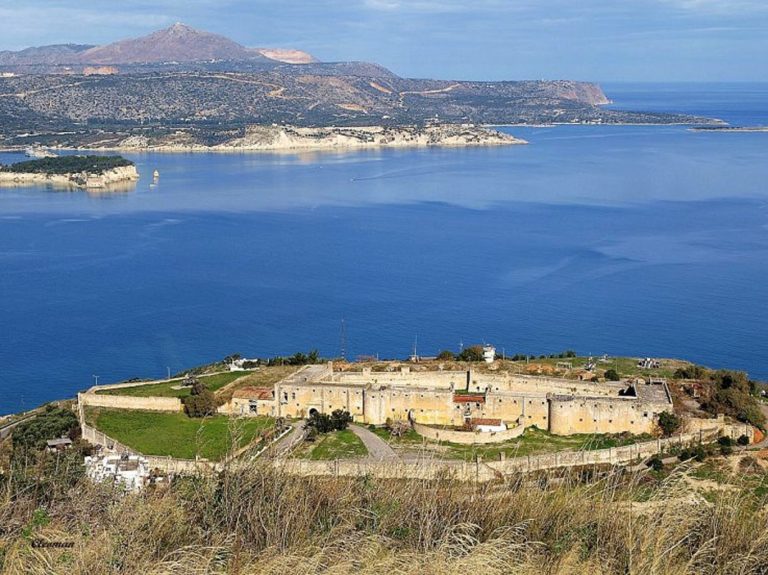Perched atop a hill with commanding views of the sea, the Itzedin Fortress stands as a monumental testament to Crete’s tumultuous past. Located a mere 14 km east of Chania Town and in close proximity to the village of Kalami, this fortress is a relic of the Ottoman Empire’s architectural prowess in the 19th century. Constructed in 1872 by Reuf Pasha, the Ottoman commander of Crete, Itzedin Fortress was the bulwark of Souda Bay’s defenses, named in honor of Sultan Abdul Aziz’s first son.
From Defense to Prison
Beyond its military significance, the fortress has a darker legacy as a prison for political dissenters, criminals sentenced to death, and common law offenders. Its walls have contained the likes of Eleftherios Venizelos, a pivotal figure in Greek politics who was imprisoned here in 1905 for a staggering 15 years. The fortress also played host to the deposed dictator Theodoros Pagkalos, marking a period where Itzedin served not just as a military stronghold but as a crucible of political retribution.
The Fortress Through Wars and Rebellions
Remarkably, Itzedin ceased its function as a prison during World War II and the initial years of the Greek Civil War, only to reopen its gates in 1948 to accommodate political prisoners from the island of Gavdos. This trend continued until the fall of the Greek military junta in 1974, with Itzedin being the grim stage for Greece’s last execution in 1972.
A Beacon of Restoration and Culture
Today, Itzedin Fortress stands silent, a reminder of the island’s struggle for freedom and the price of dissent. Efforts are underway by local authorities to breathe new life into this historic edifice. The fortress’s yard, once a place of despair, now hosts music concerts during the summer, transforming a symbol of repression into one of cultural celebration.
Our visit to Itzedin Fortress was a journey back in time, walking through its corridors and open spaces, we couldn’t help but feel the weight of history. Each stone seemed to hold a story, each echo a whisper from the past. It is a poignant reminder of Crete’s resilience and the enduring spirit of its people. As we left, the fortress stood against the backdrop of the setting sun, a solitary guardian of Chania’s past, and a beacon of hope for its future.
Sorry, no records were found. Please adjust your search criteria and try again.
Sorry, unable to load the Maps API.
